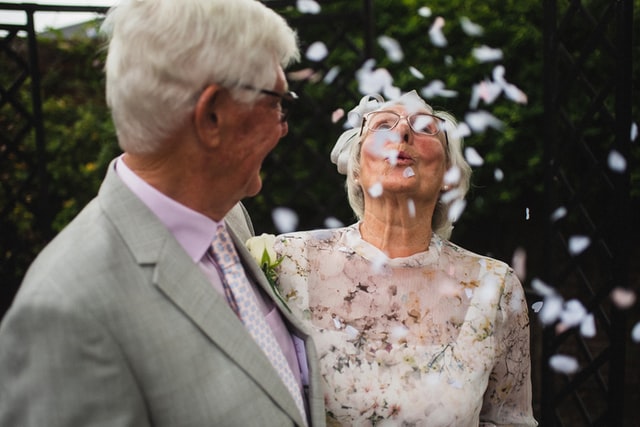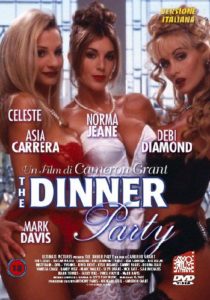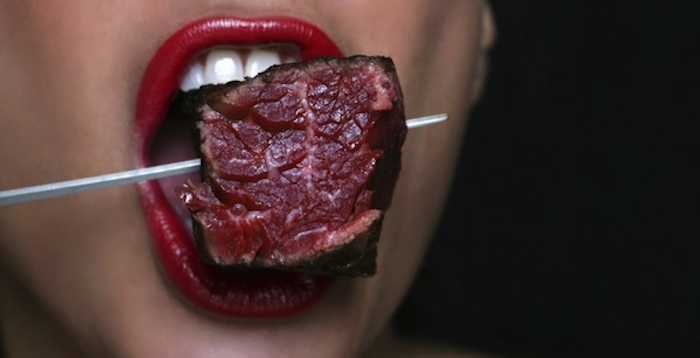NEURO-CISE: THE 15 C’S, DUO
“On a metaphysical level, harmony between the brains means harmony and integration between our ‘mental’ bodies and our ‘emotional’ bodies.”– Jay Alfred
I created the 15 C’s as “A Code for Creating a Confident & Charismatic Couple.” Simply put, it’s a friendly checklist of the elements that make up the strongest relationships that I’ve seen in my practice.
1. Courageousness
Any relationship takes courage. It takes courage to say the first “I’m sorry” and it takes guts to lower your guard enough to let a partner truly see who you are. It takes just as much bravery to make the commitment to stay in it for the long haul because there are going to be numerous challenges that test your strength, both as a couple and as an individual.
These things might include:
♥ Saying “I love you” first.
♥ Asking for help.
♥ Admitting mistakes.
♥ Discussing family misconduct.
♥ Facing financial struggles.
♥ Confronting sexual needs.
Courage is often associated with gigantic acts of risk or valor such as having the audacity to sing in front of a crowd, the boldness to run for president, or the fearlessness to charge into a burning building to save people. These are obviously courageous and commendable
actions that release dopamine (the fireworks of all chemicals), but there are smaller acts of courage that are no less admirable. Take some time to think about your life. The fact is, it is humanly impossible to reach adulthood without a few acts of courage. Thank your partner and tell them how you think they’ve been brave. We’re taught not to be boastful, so hearing the words “I’m so impressed that you were able to do that” has a tremendous capacity to fill someone’s day with gratitude and love.
2. Communication
We’ve talked a lot about communication throughout this blog because it is the number one reason for both success and failure in a relationship. Remember that conversation is not always communication. Consider the three levels of communication: surface, intimate, and intuitive. Surface communication is everyday conversation: the weather, the work day, dinner plans, what’s on TV, etc. Facts without emotional depth. With intimate communication, emotional issues, fears, and topics that require deep trust emerge.
Intuitive communication is the ability to make thoughts and feelings clear without having to say a word. Your partnership has become part of your instinct, and you can read each other’s needs clearly. Remember that left and right-brained people communicate differently, so be sure to approach your partner by using their predominant brain language and both of you will enjoy the lingering pleasure sensation of serotonin, the feel good chemical.
3. Chemistry
People think that you either have chemistry or you don’t, and they are absolutely right! The limbic system, known as the seat of emotions, drives impulses and desires including sexual ones. So you can enhance your chemical attraction by doing the things you did when you first met, such as making out a lot or finding new erotic areas of mutual interest.
Testosterone and estrogen, the male and female sexual hormones, will be triggered as you go deeper and share your fantasies. Expand your sexual horizons by making love in new positions and locations while flooding your body with feel- good endorphins. Chemistry can also be sparked with the element of surprise, so think outside the box!
4. Compatibility
Knowing where you’re most compatible can go a long way to strengthen a relationship. Shared likes and interests create a lot of opportunity to connect through experience, discussion and the bonding chemical, oxytocin. Compatibility, closeness, romantic
communication and behavior can raise oxytocin levels and lead to deeper intimacy.
Write down all the areas in your relationship where you already know you’re compatible. It’s a good reminder of the foundation you have in place. Then make a list of areas where you don’t feel compatible.
Together divide that list into two parts:
A) Areas where it’s okay that you’re not compatible and can agree to have different interests and pursuits.
B) Areas where you could find more compatibility with a little effort to share an interest.
5. Curiosity
One of the most powerful ways to keep a relationship fresh is to treat it with a constant sense of curiosity. Look at each other without history, if possible. See the person across the table from you, lying next to you in bed, as new. Be curious about his/her day. What did they do? Be curious about the parts of that person that you just don’t know. Never pretend in a relationship that you really know the other person. Be curious about new and exciting facets of their personality, about what they really like. Always be curious about the next step in a relationship. Individually, and as a couple, keep curiosity as the heart center of your relationship and it will keep your brain firing up new neural pathways.
6. Contentment
Some people confuse contentment with boredom. There’s nothing boring about feeling happy and safe. But it’s important to maintain happiness through gratitude. Make a list of the things you’re grateful for in your life with your partner. Tell each other on a regular basis how contented you are in your relationship. Call home from work for no reason at all except to tell your partner how great things are, and how much you love your life with your partner. Focus on the parts of your life that are working and have ease so that you have
the strength to face challenges together. Give each other a quick fix of oxytocin with a heart-to-heart hug as a daily ritual and you might find that you both become addicted to the loving effect.
7. Collaboration
View everything that happens in your life as collaboration so that there is a sense of togetherness even when you’re alone. This may cause the release of cortisol, the stress hormone, but the more that you can do together, the deeper the bond and the better you will feel. Make a list of gifts and talents that you bring to the relationship, and discuss how they could be purposefully mingled together. Make a wish list of the things that you’ve always wanted to do, either individually or together. How can you accomplish them through collaboration? The Journal Scientific American reports that collaboration is built into our genetic makeup and our brain function thrives around sharing, communicating and collaborating.
8. Commitment
Treat your commitment to each other like a sacred promise, not a hopeful dream. Review and renew any stated commitments you have in your life, like wedding vows, love agreements or specific plans. Celebrate anniversaries of when you first met, got engaged and married.
Write a couple’s mission statement! Make sure your commitments are still vital and relevant to how things may have evolved over time. Pair-bonder brains, including yours, are generally set up to attach to a mate. It happens mostly because of the neurochemical vasopressin, triggering lifelong attachment and commitment.
9. Copulation
Sex is a healthy part of an intimate bond and it should be treated with the same kind of attention given to other elements of the relationship. As time goes by and the comfort level grows, the hot and heavy sex that was once a big part of your connection may have moved to the back burner. That’s fine and expected, but the back burner can generate just as much heat as the front one so be sure to turn it on every once in a while. And spice up the pot with some playful positions, experiment with different manual stimulations.
Practice conscious copulation and don’t “race to orgasm” but do increase the intimate connection that will lead you to a “braingasm” that lights up the entire brain.
10. Creativity
Seek out some interesting ways to keep the sparks alive. Decide on a list of creative projects that would be fun to do together, such as cooking, painting, dancing, writing a back-and-forth poem or story, taking an acting improv class, or redecorating one of the rooms of the house. Use your creativity for your date night. Instead of doing things that are passive, find things that you can do that are moreactive in nature: a romantic scavenger hunt, bubble bath followed by massage or a moonlight walk in the park or on a beach. Try looking at your sex life in a more creative fashion, too. Take turns being
responsible for bringing creativity into all areas of your life, starting with your sex life. A study at Dartmouth College shows that the roots of creativity are found in eleven areas of the brain that make up the imagination “mental workplace,” and that this playground
stretches across the full brain-scape, making creative endeavors one of the best mental exercises available.
11. Consideration
Try doing one daily thing for each other that is purely an act of consideration, especially when your partner is sick. Make an appointment for them, take their clothes to the cleaners, get their car washed or just have their favorite drink ready when they come home. If your partner is not well, it’s important to communicate that it’s a temporary situation, and let them know you still find them desirable. If there is one thing daily that you can do for your partner, then you will feel more appreciated, and you will know that you are appreciating your partner. When you give love, you will receive love, and the ensuing oxytocin will help to maintain the bond, even if there is no sex.
12. Contribution
One of the most important aspects of being a couple is a sense of having a mission together. How can you as a couple contribute to other people’s lives, to other people’s projects? Find ways you can contribute to your neighborhood, to your community or charity, to your state, to your country. When a couple has the feeling that there is a strong sense of moral purpose at the core of their relationship, the couple has more reasons to make the relationship work, and there is much more of a grounded, spiritual nature. This is as important in the life of a couple as sexuality.
Paul Zak, founder of Claremont Graduate University’s Center for Neuroeconomics studies found that oxytocin’s ability to amplify feelings of trust, also spark generosity and contribution in a relationship. In fact, he found oxytocin to increase generosity by 80 percent. The subgenual cortex (which is activated by oxytocin) makes people feel good when they are doing something positive such as giving.
13. Compromise
Learning to compromise is one of the biggest lessons to be learned in a romantic relationship. Two people can’t always have the same needs, opinions, and expectations, but they can become encoded by our memories, which are stored as a synthesis of different experiences and emotions. A relationship without challenge stops growing and becomes predictable, maybe even boring, like brain cells that stop growing. This can be especially true when partners having very different approaches to life and ways of processing of information. Your hearts might be in the right place, but if you’re wires are crossed,
then trouble ensues.
Communicating your needs will sustain the longevity of the relationship. You must address these issues from your point of view, not blaming the other person for what you do not get. You’ll need to be honest enough to say what works for you and what does not, without blaming the other person. For example, if sex is the issue, you could say, “I know our sex life hasn’t been the most exciting in the past few months, so I love your idea of trying to spice it up, but I’m not comfortable watching pornography. Perhaps we could go shopping for a fun sex toy to experiment with together.” Or if lack of shared time together is the issue, you could say, “I know you hate sappy movies and I can’t stand violent action films, but let’s make a point to find a film we can both enjoy this weekend, because date night is really important to me.” If you don’t state what you want and offer a compromise, you
can’t expect things to magically work out.
14. Comedy
“A well-developed sense of humor is the pole that adds balance to your steps as you walk the tightrope of life.”– William Arthur Ward
Speaking of magic, humor is a magical thing. True love takes hard work but if you don’t
find the time to laugh, what’s the point of working so hard? Humor is a key element in any
relationship, whether it is used as part of the initial flirtation or as a stress diffuser many years into a long-term commitment.
And we’ve all heard that laughter is the best medicine because when you laugh, your brain reacts by producing chemicals that make you feel happy.
Light-hearted humor, free of sarcasm or ridicule, can soothe conflicts by allowing you to address a concern without raised defenses or hurt feelings. The intent of humor should always be to communicate something positive and never to undermine, insult, or degrade
your partner.
While the joys of laughter may be obvious, are you aware of its health benefits? Reduction
of stress, stimulation of the immune system, a rise of the endorphins in the blood that
work as painkillers, a decrease in systemic inflammation, and lowered blood pressure have all been linked to laughter. It’s also healthy exercise. Dr. William Fry, a leading researcher in the psychology of laughter, says that 20 seconds of hearty laughter can quickly double the heart rate for up to five minutes, which is equal to the physical response to three minutes of vigorous rowing exercise.
15. Celebration
Last, but definitely not least, is celebration. Couples who have a sense of celebration about their own lives and about their relationship don’t just survive, they thrive. Celebration is a life attitude; it’s not something you go out to do. Find ways to celebrate, and you will find more reasons to stay together. Not just anniversaries, but a beautiful day, a great meal, a fabulous date – these are all reasons to celebrate! Celebration implies play and a playful nature in a relationship will keep it fresh, young and exciting.
Psychologists Dr. Wil Cunningham and Tabitha Kirkland at Ohio State University uncovered the effect while scanning brains of happy people and reported, “People with rose-tinted glasses are more responsive to positive things in the environment. But it’s not at the expense of the negatives in life. They’re not seeing the positives in everything, but
they see the positives where they can find them.”
Happy people respond more strongly to joyful objects and events in the world, their increased sensitivity helping to reinforce their happiness over time, and that’s cause for celebration.
“Laughter is the shortest distance between two people.” – Victor Borge, comedian, conductor and pianist










 Another look at Ray’s filmography reveals titles from a myriad of couples-oriented studios, films including Women On Top and For Women Only. And while character names such as The Pool Boy may not seem revolutionary to some, it cannot be overstated that Joey Ray (cited as an influence by current leading adult stars like Seth Gamble) played a role in the women’s erotic revolution; a movement that still continues today, as we continue to demand quality erotic films for the female gaze.
Another look at Ray’s filmography reveals titles from a myriad of couples-oriented studios, films including Women On Top and For Women Only. And while character names such as The Pool Boy may not seem revolutionary to some, it cannot be overstated that Joey Ray (cited as an influence by current leading adult stars like Seth Gamble) played a role in the women’s erotic revolution; a movement that still continues today, as we continue to demand quality erotic films for the female gaze.

















